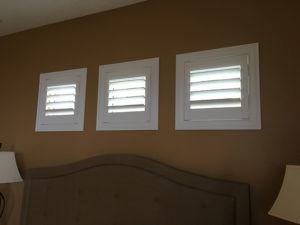
 One of the aspects of indoor window shutters that makes them a great choice for many homeowners is that they can be made from many different types of materials. Different materials used in window shutters have different qualities, but the most noticeable one is the way that they look. Although there are many different materials to choose from when looking at indoor window shutters, Brooksville residents should be made aware that some materials are much more popular than others, and most window shutters are made from a handle of materials.
One of the aspects of indoor window shutters that makes them a great choice for many homeowners is that they can be made from many different types of materials. Different materials used in window shutters have different qualities, but the most noticeable one is the way that they look. Although there are many different materials to choose from when looking at indoor window shutters, Brooksville residents should be made aware that some materials are much more popular than others, and most window shutters are made from a handle of materials.
Composite Material Shutters
Most people know of window shutters by the white composite ones that they see on commercials and advertisements, which are the most common configuration of indoor window shutters. Brooksville residents might think these shutters are made from plastic, but they are actually made from composite materials such as polyurethane. Polyurethane and other composite materials are very durable, and can last for years without ever having a problem. They are easy to clean and just as easy to keep maintained. They are designed to not be affected by sudden temperature changes or constant exposure to sunlight.
Hardwood Shutters
If You are looking for a material that is a little more elegant than composite materials, then you may be interested in learning more about natural hardwood indoor window shutters. Brooksville residents should know that there are many different species of wood that are used to make awesome indoor window shutters, and choosing one often depends on the preference of the homeowner. Hardwood shutters do need a little more attention than composite material shutters, because they are affected by atmospheric conditions like humidity and temperature. If hardwood window shutters are taken care of properly and treated on a regular basis, it is not uncommon for someone to get more than twenty years out of their window shutters before they would think about replacing them.
*Disclaimer: The views expressed here are those of the authors and do not necessarily represent or reflect the views of Shutter Professionals*

